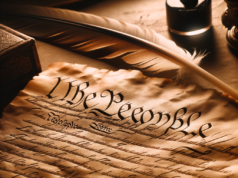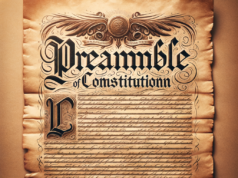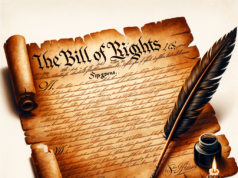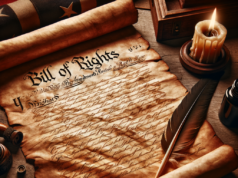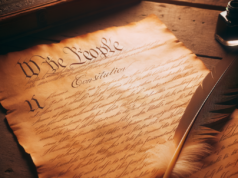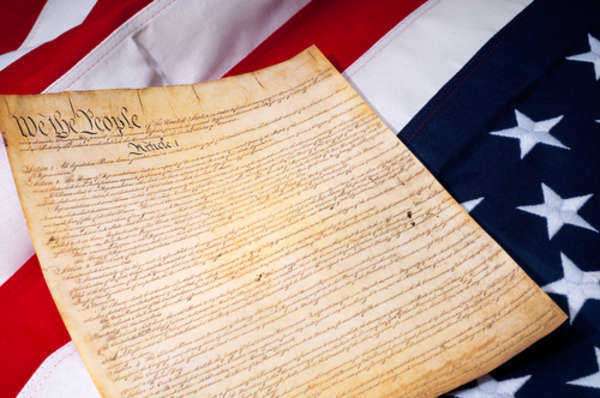
The 19th Amendment in the United States Constitution granted women the right to vote in 1920. Although the amendment was only a mere 39 words, it changed the political landscape of the United States significantly. Before the ratification of the 19th Amendment, women had no political power and were restricted from voting and participating in political offices. They had no say in the decision-making process that directly affected their lives, their families, and the broader American society at large. However, with the ratification of the 19th Amendment, women were granted the right to vote and participate actively in the nation’s political affairs, a right that had been long denied to them.
The 19th Amendment to the United States Constitution was passed on June 4, 1919, and ratified on August 18, 1920. The Amendment states that “The right of citizens of the United States to vote shall not be denied or abridged by the United States or by any State on account of sex.” This Amendment effectively granted women the right to vote in federal and state elections. The Amendment ended suffrage discrimination, which was a long-standing issue in the United States. The ratification of the Amendment marked a significant step in achieving gender equality and provided an essential pathway for women’s empowerment in the political and social spheres.
The 19th Amendment is short and sweet, and yet its repercussion is profound. It simply and clearly states that no citizen of the United States can be denied the right to vote based on their gender. Before the amendment was ratified, women were not allowed to vote in the United States. They were excluded from public life, and their political voice and power were absent. The 19th Amendment made voting rights of women a constitutional right and reshaped the political condition in the United States.
The women’s suffrage movement that began in the mid-19th century was instrumental in the development and eventual ratification of the 19th Amendment. The movement demanded that women be granted the same rights as men, including the right to vote. This movement began as a grassroots political movement where women came together to fight for their right to vote. The movement received support from prominent figures like Frederick Douglass, Susan B. Anthony, Elizabeth Cady Stanton, and Alice Paul, among others.
The journey towards the ratification of the 19th Amendment was long and hard-fought. The suffrage movement faced a range of challenges, from legal obstacles to social and cultural barriers. In 1875, the Supreme Court rejected a woman’s right to vote in Minor v. Happersett, saying that the Constitution did not grant voting rights to women. The ruling had a significant setback on the movement, but suffragettes refused to give up.
The women’s movement gained momentum in the late 19th and early 20th centuries. In response to their raised demands, several federal and state laws were passed to expand women’s rights, including granting women the right to vote in certain states. For example, in 1869, Wyoming became the first state to allow women’s right to vote, followed by Colorado, Utah, Idaho, and Washington, in that order. These states paved the way for women’s voting rights in the rest of the country.
In 1918, President Woodrow Wilson publicly endorsed a constitutional amendment to grant women’s suffrage, which was eventually proposed to Congress. The amendment passed through both Houses of Congress in 1919 and was sent to the state legislatures for ratification. Thirty-six states were needed to ratify the amendment, and on August 18, 1920, Tennessee became the thirty-sixth and final state to do so. Two months later, the 19th Amendment was made part of the United States Constitution.
Over the past century, the 19th Amendment has impacted American society in numerous ways. It has given women more agency in electoral processes and institutions, allowing them a greater role in governance. It also ended the longstanding injustice of denying women the right to vote, thereby promoting gender equality and social justice. Since the ratification of the 19th Amendment, women’s participation in electoral and political representation has increased, and their voices have become increasingly important in policy-making bodies.
The ratification of the 19th Amendment, however, did not instantly foster gender equality in America. Women still had to fight to overcome gender-based discrimination and inequality within society. Furthermore, Black women were still denied the right to vote in many states until 1965, when the Voting Rights Act was ratified, providing full voting rights for Black Americans. Additionally, it wasn’t until 1984 when a woman ran for vice president, with Geraldine Ferraro serving as the Democratic nominee, which underscored their continued progress in American politics.
The Nineteenth Amendment is another Amendment to the United States Constitution that was implemented in order to provide for a guarantee of civil rights to all citizens of the United States.
In the vein of the fifteenth Amendment, the Nineteenth Amendment would call for the prohibition of the state and Federal governments to deny a citizen the right to vote due to the citizen’s sex. It would take fifty years for women to obtain that right which was granted to free men in 1870 by virtue of the Fifteenth Amendment. The 19th Amendment was ratified on August 18th, 1920.
The Nineteenth Amendment states, “The right of citizens of the United States to vote shall not be denied or abridged by the United States or by any State on account of sex. Congress shall have the power to enforce this article by appropriate legislation.” Though the Women’s Rights Movement for Suffrage was already underway in previous years, it would not be until the adoption of the 19th Amendment in which they would ultimately reach success.
Women’s suffrage can be traced back to 1848 to the “Declaration of Sentiments” delivered in Seneca Falls, NY, which would be the first Woman’s Rights Convention held in the United States. Women suffragists sought their inclusion in recognition of voting rights provided by the Fifteenth Amendment but evidently did not make a strong enough case for universal suffrage. It would be in 1878, where the Constitutional Amendment, including what is now Section I of the Nineteenth Amendment, would be proposed.
Congress would hear the inclusion of this Amendment in every session for the next 41 years until it was finally approved. However, it is not to say that certain states did not grant women the right to vote. The inclusion of Wyoming as a state in 1890 in turn made the new State of Wyoming the first state allowing women the vote. Other states, such as Colorado, Utah, and Idaho would also follow suit in years to come.
On the national level, support for women suffrage would arrive at its most successful step to date on January 9th, 1918, when President Woodrow Wilson announced his support for what would eventually become the 19th Amendment. The bill was voted on the following day, in which the House of Representatives managed to pass the Amendment, but the Senate would eventually vote on it in October of the same year and fail to pass it by three votes. It would finally get voted on once again in 1920 when Harry Burns would provide the necessary vote for the State of Tennessee to become the 36th State necessary to pass the Nineteenth Amendment into law.
It was quite the controversial move on Burns’ part, considering that it was primarily the southern states of the U.S. that were most adamantly opposed to the 19th Amendment. However, the Nineteenth Amendment and its ratification would prove to be one of the most important changes in the history of the United States, further expanding the protection of civil rights for all citizens.



